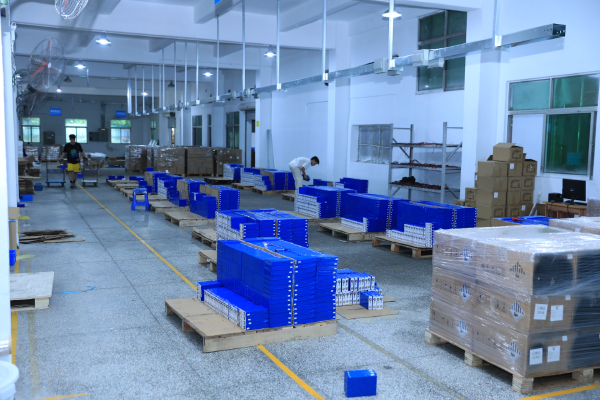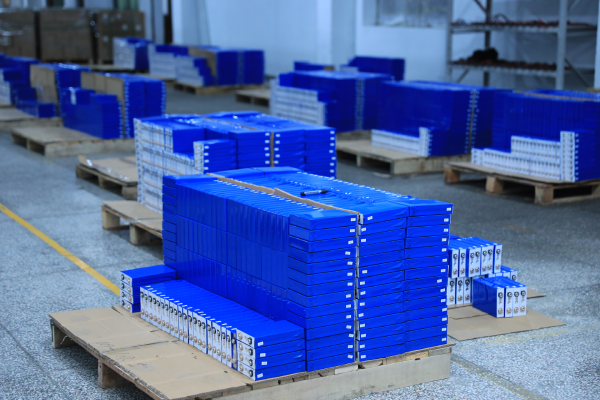Lithium batteries have become ubiquitous in our daily lives, powering everything from smartphones to electric vehicles. Their lightweight design, high energy density, and long-lasting performance have made them a preferred choice for a wide range of applications. This comprehensive exploration delves into the world of lithium batteries, unraveling their composition, working principles, applications, and the advancements shaping their future.

1. Historical Evolution:
The journey of lithium batteries began in the 1970s when researchers sought alternatives to traditional batteries. It was not until the 1990s that commercially viable lithium-ion batteries emerged, revolutionizing the electronics industry and paving the way for advancements in various sectors.
2. Composition and Structure:
Anode:
The anode, typically made of graphite, serves as the electrode where lithium ions are released during discharging.
Cathode:
The cathode, often composed of lithium cobalt oxide or other materials, is the electrode where lithium ions are absorbed during charging.
Electrolyte:
The electrolyte is a crucial component, facilitating the movement of lithium ions between the anode and cathode. It is typically a lithium salt dissolved in a solvent.
Separator:
A separator physically separates the anode and cathode while allowing the passage of lithium ions. It prevents short circuits and enhances the safety of the battery.
3. Working Principles:
Lithium batteries operate on the principles of electrochemical reactions during both charging and discharging cycles.
Charging:
During charging, a voltage is applied to the battery, causing lithium ions to move from the cathode to the anode. This process is facilitated by the electrolyte.
Discharging:
When the battery is in use, the stored lithium ions move back to the cathode through the electrolyte, generating an electric current that powers electronic devices or systems.

4. Types of Lithium Batteries:
Lithium-Ion (Li-ion):
Commonly used in portable electronic devices, Li-ion batteries offer a high energy density and relatively low self-discharge rate.
Lithium Polymer (Li-Po):
Li-Po batteries use a gel-like electrolyte, allowing for flexible shapes. They are often found in thin and lightweight devices like smartphones and tablets.
Lithium Iron Phosphate (LiFePO4):
Known for their enhanced safety and longer cycle life, LiFePO4 batteries are used in electric vehicles and renewable energy storage systems.
5. Applications:
Lithium batteries have found widespread use across diverse industries due to their superior characteristics.
Consumer Electronics:
Powering smartphones, laptops, cameras, and other portable devices.
Electric Vehicles (EVs):
Serving as the primary energy storage in electric cars, providing a high energy density for extended driving ranges.
Renewable Energy Storage:
Storing energy generated from solar panels and wind turbines for later use.
Medical Devices:
Powering various medical equipment, such as pacemakers and portable diagnostic devices.
6. Advancements and Innovations:
The field of lithium batteries is dynamic, with ongoing research and innovations pushing the boundaries of their capabilities.
Solid-State Batteries:
Solid-state batteries are emerging as a potential successor to traditional lithium-ion batteries, offering increased safety, energy density, and lifespan.
Nanostructured Materials:
The use of nanostructured materials in electrodes is improving battery performance, enhancing energy density, and reducing charging times.
Recycling Technologies:
Advances in battery recycling technologies aim to address the environmental impact of lithium batteries by recovering valuable materials and minimizing waste.
7. Challenges and Concerns:
While lithium batteries offer numerous advantages, challenges and concerns exist.
Resource Availability:
The demand for lithium resources raises concerns about their availability, leading to exploration of alternative materials.
Safety Issues:
Safety concerns, including the risk of thermal runaway and fire, prompt ongoing research to develop safer battery technologies.
Environmental Impact:
The environmental impact of lithium extraction and disposal is a subject of increasing scrutiny, spurring efforts to improve recycling methods.
8. Future Prospects:
The future of lithium batteries holds exciting possibilities with ongoing research and development.
Next-Generation Batteries:
Advancements in materials science and nanotechnology may lead to the development of next-generation batteries with even higher energy density and faster charging times.
Energy Storage Solutions:
Lithium batteries will play a crucial role in addressing global energy challenges by providing efficient and scalable energy storage solutions.

Lithium batteries have become integral to modern life, powering an array of devices and contributing to the transition to cleaner energy sources. As research and innovation continue, the evolution of lithium batteries will shape the landscape of technology, offering solutions to challenges and powering the future of sustainable energy. Understanding the intricacies of lithium batteries is essential for embracing their potential and navigating the opportunities and challenges they present in the pursuit of a more sustainable and technologically advanced future.









